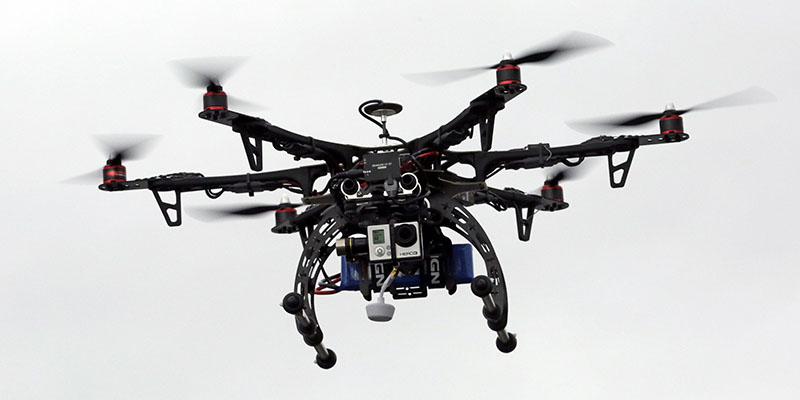
(AP Photo/Rick Bowmer, File)
Spurred by numerous reports of drones flying near jets and airports, the federal government will require that the aircraft be registered to make it easier to identify owners and educate amateur aviators.
The move, announced Monday by the Federal Aviation Administration, comes at a time when the agency is receiving more than 100 reports per month about drones flying near manned aircraft. The FAA prohibits drones and model airplanes from flying higher than 400 feet or within 5 miles of an airport.
Drones have become increasingly popular with hobbyists. The FAA estimates that 1.6 million small unmanned aircraft will be sold this year, with half during the last three months of the year.
The drones must be marked with the owner’s unique registration number. The FAA said that would let authorities track down owners if they violate the rules. But registration also gives the agency a vehicle to educate owners just as thousands get drones as presents for Christmas and other holidays.
The requirement covers aircraft weighing from more than half pound up to 55 pounds, including any payload such as a camera. Drone owners who are 13 and older will have to register on an FAA website that becomes available starting Dec. 21. The FAA expects parents to register for younger children.
Registration will cost $5 and must be renewed every three years, but the fee will be waived for the first 30 days, until Jan. 20. Owners will have to mark aircraft with an identification number. Recreational fliers can register as many aircraft as they want on one registration number.
Most people who fly drones and model aircraft have little aviation experience, but they become pilots as soon as they start to fly, said Deputy FAA Administrator Michael Whitaker. “They have the responsibility to fly safely, and there are rules and regulations that apply to them,” he said.
Those who got drones before Dec. 21 must register by Feb. 19. People who buy them later must register before their first outdoor flight.
Owners will have to provide their name, home address and email, and their identity will be verified and payments made by credit card, the agency said.
The FAA said it used some of the recommendations from a task force appointed by Transportation Secretary Anthony Foxx, but the move disappointed a large group representing model airplane users.
The Muncie, Indiana-based Academy of Model Aeronautics said registration is an “unnecessary burden for our more than 185,000 members who have been operating safely for decades.”
The group maintains that Congress in 2012 prohibited the FAA from new rules for recreational model aircraft users who are part of a community-based organization.
But Whitaker said while the law prohibits new rules, the FAA has the authority to register the aircraft.
The requirement won support from other task force members, including the Association for Unmanned Vehicle Systems International, an industry and academic organization. The group said the addition of consumers to the registration requirements will promote responsibility and safety.
Government and industry officials have expressed concern that drones, like birds, could be sucked into an aircraft engine, smash a cockpit windshield or damage a critical aircraft surface area and cause a crash.
Drones are responsible for at least 28 recent instances in which pilots veered off course to avoid a collision, according to an analysis of FAA reports by Bard College’s Center for the Study of the Drone in Annandale-on-Hudson, N.Y.
Aircraft engine manufacturers currently test the ability of engines to withstand bird strikes by firing dead birds at the engines at high velocities. The FAA hasn’t yet said when it will require engine makers to conduct tests with drones, but officials have unofficially acknowledged they are working on the issue, the report said.
Filed Under: Industry regulations




